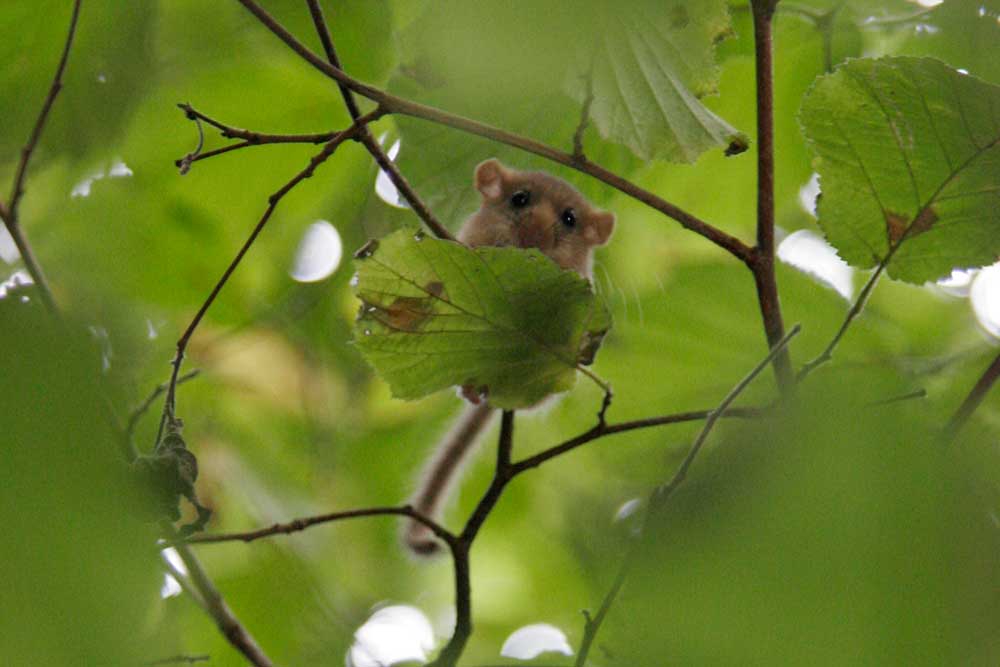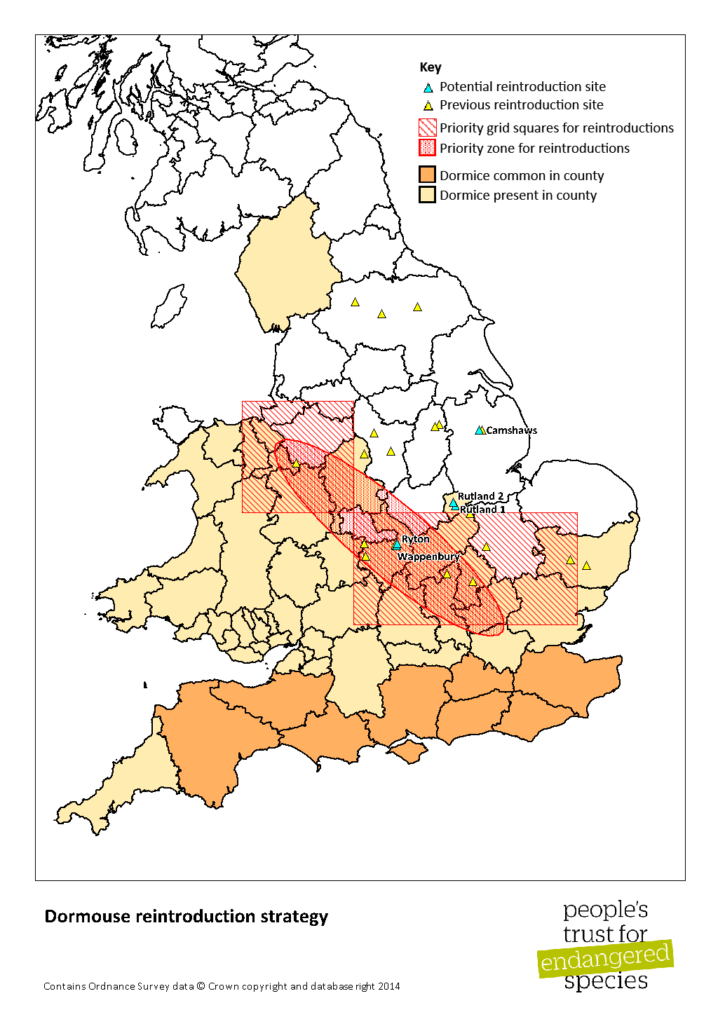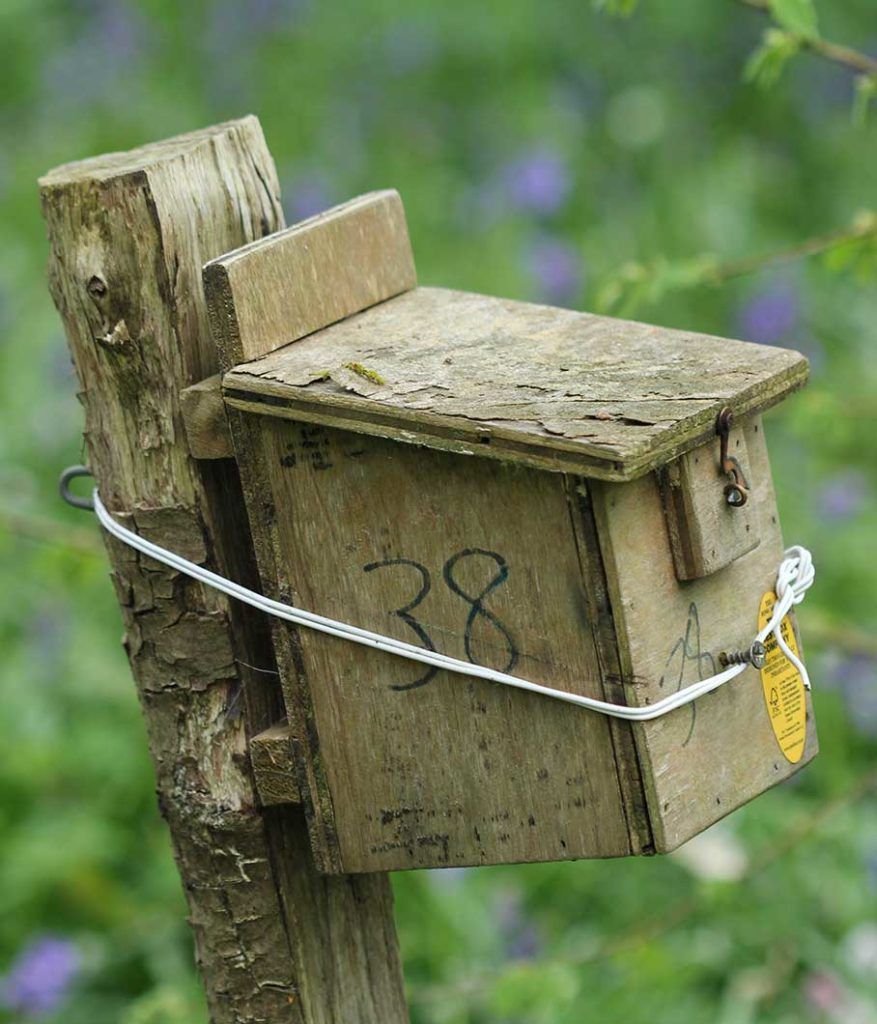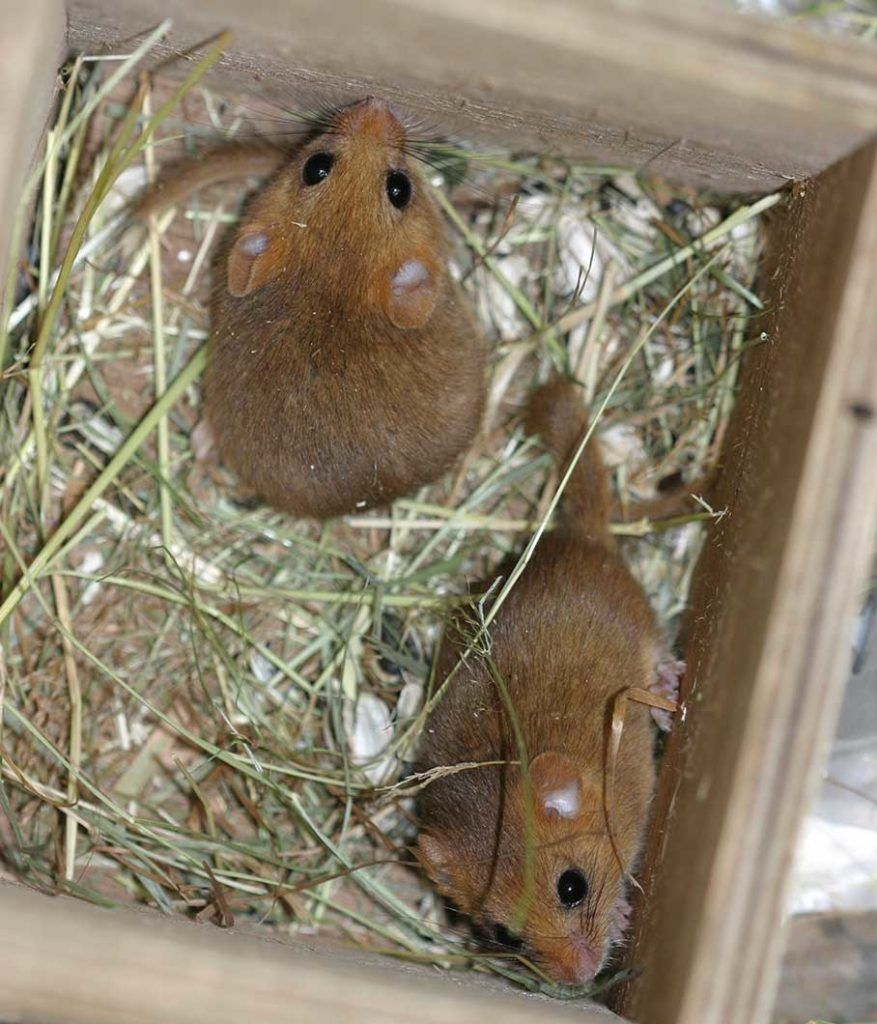Dormice reintroductions

Dormice have become extinct in 17 counties within their historical range. They disperse slowly so even when woodland and hedgerow management improves, they’re highly unlikely to naturally recolonise. So we set up a reintroduction programme to help dormice return.
The dormouse reintroduction programme started as part of the English Nature Species Recovery Programme. The first reintroduction took place in 1993 and a reintroduction takes place approximately every year. The aim of the programme is to restore dormice to counties and areas where they have gone extinct. The programme uses captive-bred animals supplied by the Common Dormouse Captive Breeders Group. A key member of the CDCBG is Wildwood in Kent, which breeds a significant number of dormice for the programme and maintains the Dormouse Stud Book. The Zoological Society of London (ZSL) and Paignton Zoo quarantine the animals for six weeks.
In June, after quarantine around 40 animals are placed in mating pairs in large release cages sited in the woodland and allowed to familiarise themselves with their new home. After 10 days, small openings are made in the cages so the dormice can leave their release cage. Food is supplied for two months after which they should be able to find their own.
Suitable reintroduction areas are ideally a hedged and wooded landscape of at least 100 hectares with at least two suitable reintroduction sites within it. The woodlands selected for a reintroduction will have a long-term management plan to support dormice, the potential for the dormice to disperse into the wider countryside once established, and a committed volunteer group to assist the release and do long-term monitoring.
We aim to focus the geographical location to the edge of the current range as shown on the map below.

Success criteria:
Short-term: dormice survive the first two winters and breed in the third year.
Medium-term: dormouse population remains stable at site over 5-10 years and disperses.
Long-term: population increases and expands range such that long-term survival is highly likely.
Since 1993 we’ve achieved 37 dormouse releases using a total of 1,142 dormice to 26 sites in 13 counties. We manage and co-fund the reintroductions. Co-funding and supervision is provided by Natural England. Others actively involved are Paignton Zoo, the Zoological Society of London, the Common Dormouse Captive Breeders Group and local volunteers.
Case study: North Yorkshire 2016

Thirty eight dormice were released in a woodland in Wensleydale, North Yorkshire, into large cages secured to trees. Volunteers checked the cages and provided food and water whilst the dormice got used to the sounds and smells of their new wild home. After two weeks’ small openings were made in the cages allowing the dormice go free and explore their new surroundings.
Nest boxes put up in the wood gave the dormice somewhere to nest over the summer and autumn. When checked in September, 32 dormice were found living in the wild and in the next May, 10 adult dormice were recorded. This excellent result suggests that the reintroduced dormice are settling into their new home.
This release was part of a wider project leading from a successful reintroduction at Freeholders Wood in 2008, also in the Wensleydale valley. PTES, in partnership with the Yorkshire Dales National Park Authority, is now working on linking the two sites with dormouse-friendly hedgerows.
We know dormice were found in the Valley in 1885 but they became locally extinct. It’s very exciting to restore them to their historic home.
Case study: Warwickshire 2017-18
As part of the Dunsmore Living Landscape project in Warwickshire, 40 dormice were released in June 2017. A year later, 39 more dormice were released in another wood close to the 2017 site. The release was documented in an article in World of Animals.
The release was a big day for the dormice and everyone else involved in the release and it all went according plan. It takes a team to reintroduce 39 dormice! Warwickshire Wildlife Trust, Natural England, ZSL, Paignton Zoo and the Common Dormouse Captive Breeders Group all helped make it such a success.
All the dormice released are captive bred and so to prepare them for their life in the wild they are fattened up a bit in captivity to give them a head start.at release their average weight was 23.6g.

Ten days later when the cages were opened, the weights had dropped to an average of 20.1g. This is closer to the weights of wild dormice in June, which is about 16.8g. Perhaps they know that they need to be lean and agile to survive!
Volunteers continued to provide food for the dormice throughout the summer and in autumn monitoring began.
We have been working to save hazel dormice in the UK for over 20 years. Find out about our campaigns and how you can help.
Go back to Hazel dormouse conservation
